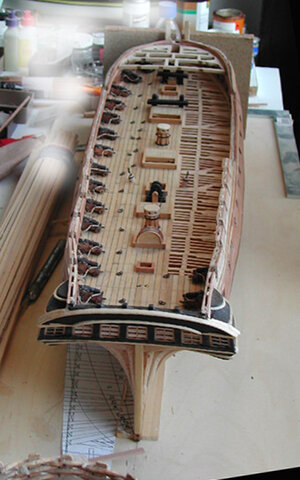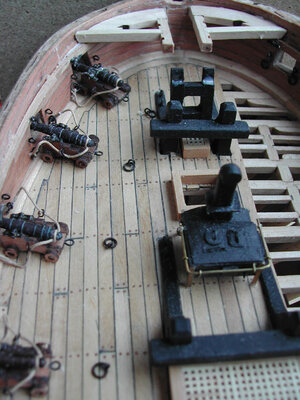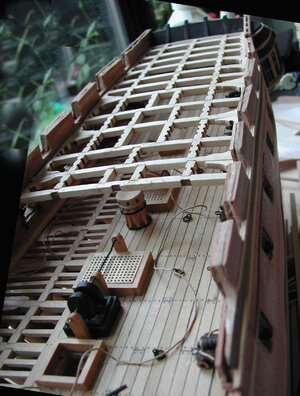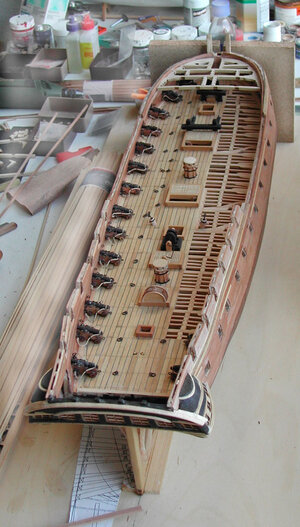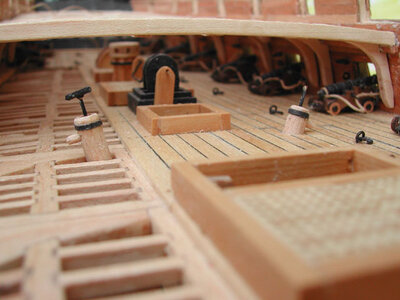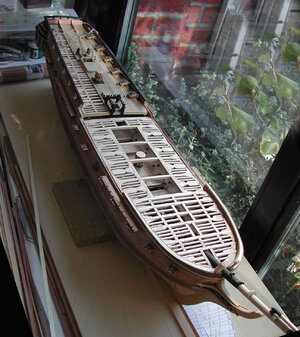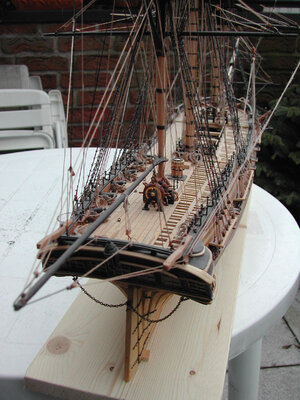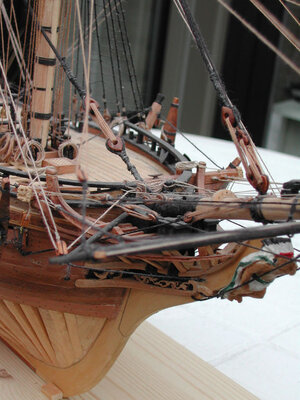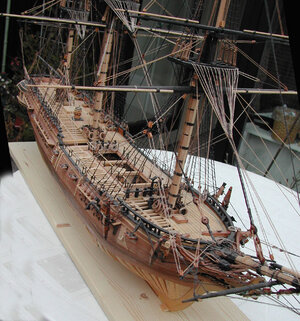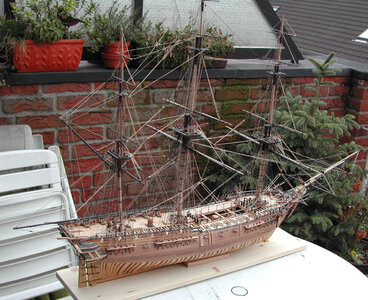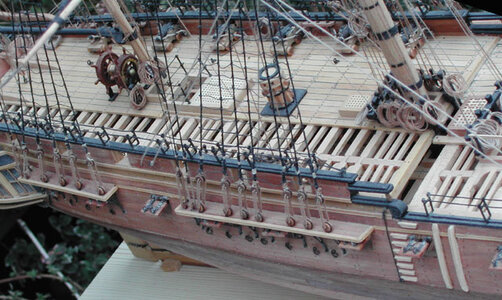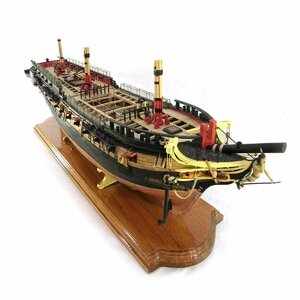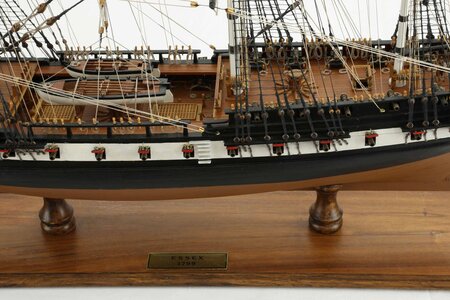I'm building the "Essex" in part because it was built (in 1799) with funds subscribed by the people of Salem, MA, where my father was born 115 years later. I'm confused by images on p. 18 of the manual, which show part of the hull former removed in several places between the bulk heads. I cannot find any reference to this step in the instructions and cannot figure out what purpose is served by removing part of the former.
I was surprised also when I realized the model did not have parts for a full representation of masts. Happily, the plans include a version of the 1799 dimensions, which with a little arithmetic I can scale down for a fully masted ship. I am also working on HMS Surprise (at a different location), which is of similar scale and size, so I hope to capture some of the dimensions from it as a guide to what will be appropriate for the Essex.
I would appreciate any guidance from folks who have worked with this ship.
I was surprised also when I realized the model did not have parts for a full representation of masts. Happily, the plans include a version of the 1799 dimensions, which with a little arithmetic I can scale down for a fully masted ship. I am also working on HMS Surprise (at a different location), which is of similar scale and size, so I hope to capture some of the dimensions from it as a guide to what will be appropriate for the Essex.
I would appreciate any guidance from folks who have worked with this ship.




